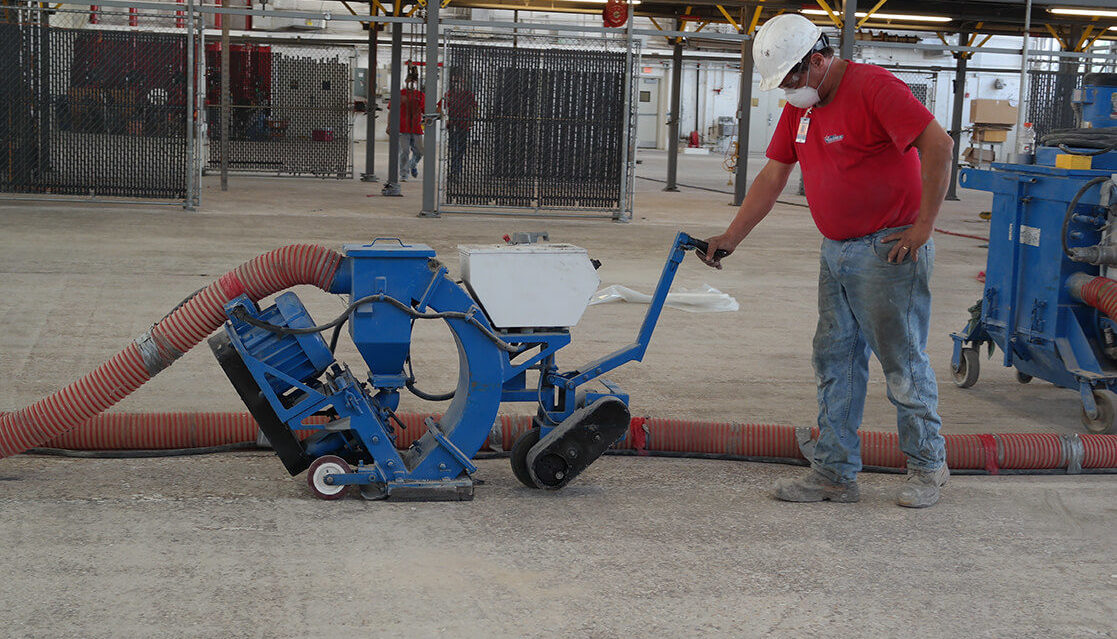
Adequate adhesion of screeds, renders, concrete repairs and floor coatings/ membranes can only be achieved when correct substrate preparation has been carried out. Finishing of concrete and screeds by trowelling, powerfloating or tamping will leave a layer of laitance (a relatively weak layer of hydrated cement) on the surface which must be removed; adhesion to laitance will result early failure of adhesion of floor screeds and coatings and early or eventual failure of adhesion of mortars to vertical and overhead surfaces. The mode of failure is typically a breakdown of cohesion in the substrate at or close to the bond line and inspection of debonded mortars and coatings will reveal laitance and often parts of the concrete matrix adhered to the mortar or coating.
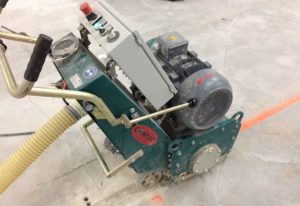 Some degree of surface texture is also required for adequate adhesion and mechanical preparation of the surface of the substrate will remove laitance and provide the required texture for good adhesion of screeds, renders, concrete repairs and floor coatings/ membranes. When floor coatings/ membranes are to be applied, surfaces should be lightly textured to ensure that a smooth finish to coatings can be achieved or to ensure that adequate coverage of high points in the substrate can be achieved by waterproof membranes.
Some degree of surface texture is also required for adequate adhesion and mechanical preparation of the surface of the substrate will remove laitance and provide the required texture for good adhesion of screeds, renders, concrete repairs and floor coatings/ membranes. When floor coatings/ membranes are to be applied, surfaces should be lightly textured to ensure that a smooth finish to coatings can be achieved or to ensure that adequate coverage of high points in the substrate can be achieved by waterproof membranes.
Concrete contaminated by substances (such as acids) which weaken the concrete or are a barrier to adhesion should be removed, or in the case of heavy oils, the concrete should be degreased, repeated application of a suitable degreasing agent may be required and an absence of oil at the surface immediately after treatment is not necessarily an indication of complete oil removal. Oil that remains in the capillary pores of the substrate will slowly migrate to the surface and an inspection should be made the following day before proceeding. Degreasers should be removed by washing after application and it may be necessary to use a ph neutral cleaner after degreasing. In some cases of contamination by heavy oils, it may be necessary to plane the surface until uncontaminated concrete is exposed. Light oils may penetrate very deeply into the concrete and full removal of oil may not be possible in such cases. Hot compressed air (HCA) treatment may be employed if site conditions permit; this is a skilled and potentially hazardous operation and should only be carried out by an experienced contractor after a risk assessment had determined that HCA is appropriate. A low viscosity resin primer is applied to the concrete immediately after HCA treatment, to suppress oils that remain below the concrete surface. The retained heat in the concrete surface should cause sufficiently rapid hardening of the primer for it to become an effective barrier before oil begins to rise.
Concrete Preparation Methods
Captive Shot Blasting
Captive Shot Blasting is used for floor preparation, machines are available in a variety of sizes and the largest are capable of preparing up to 1,500 square metres in a day. Different grades of shot are available for light medium and heavy substrate textures.
Open Grit Blasting
Open Grit Blasting is typically used for preparation of concrete surface before repair and protective coating works are carried out to concrete facades, soffits, beams, columns etc. Grades of grit may be varied according to the texture required. Grit blasting is also used for preparation of steel reinforcement.
Pressure Washing
Pressure Washing may be used to remove surface contamination or with increased water pressure, to provide a lightly textured surface to façades etc.
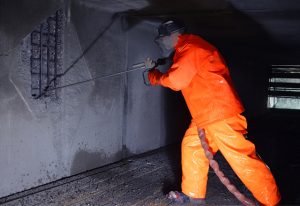 Hydrodemolition
Hydrodemolition
Hydrodemolition involves the use of very high water pressure to remove sections of reinforced concrete before replacement or modification works are carried out. Hydrodemolition is also used to remove spalled or otherwise damaged or defective concrete before large scale repairs are carried out, typically during civil engineering repair contracts. A benefit of hydrodemolition is that it is less likely to produce fracturing of remaining concrete than heavy breakers.
Scabbling/ Planing
Scabbling/ Planing can be used to produce surfaces with more texture than is produced by blasting. The use of planers such as Von Arx FR200 or BEF 200 series machines may be a more economical means of preparing smaller floor areas. Single headed or 3 headed scabblers are used for preparing concrete surfaces or removal of concrete in patch repairs and for texturing walls before application of renders.
Concrete Breaking
Concrete Breakers can be used to remove concrete before patch repairs are carried out but care must be taken to avoid fracturing of remaining concrete, particularly when heavy duty breakers are used to remove concrete in floor repairs. Breakers are not ideal for preparation works and large pieces of concrete may be sheared away, leaving insufficient texture. After concrete breaker has been used it is advisable to scabble or needle gun concrete surfaces.
Needle Gunning
Needle Guns can be used for local removal of coatings, or to produce a lighter texture than is typically achieved by scabbling.
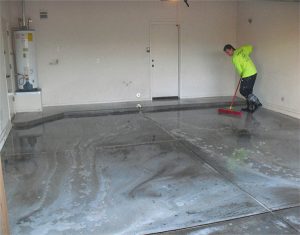 Acid Etching
Acid Etching
Acid Etching can be used on concrete floors to remove laitance and produce a lightly textured surface but it has some disadvantages. Results can be variable, with denser parts of the surface being underprepared. The etched surface has to be flushed with clean water before application of a neutralising wash to return the ph of the concrete surface to approximately 7, before flushing with clean water again. When resins are to be applied to the floor, the surface must then be allowed to dry.
Preparation of Concrete and Screeded Floors
Captive shot blasting is the preferred method of preparation for floor coatings and thin screed toppings when the removal of laitance and provision of light to medium texture is required. Scabbling/ planing produces a more textured surface than shot blasting; surface texture can be influenced by the choice of attachment fitted to the drum of a planer. All loose, friable or contaminated materials must be removed before the screeding or coating process commences.
Preparation of Concrete for Vertical and Overhead Repairs
Grit blasting or water jetting of concrete surfaces is often carried out before commencement of the repair process. Unless the specification requires more onerous action, concrete affected by reinforcement corrosion should be removed until 50mm of uncorroded steel has been exposed and the fingers of a gloved hand can pass between reinforcement and concrete. Corrosion products should be removed in accordance with the specification, typically by grit blasting or mechanical wire brushing. When the limits of patch repairs have been determined, repair edges should be defined by saw cutting to a typical depth of 6-12mm, before removal of sufficient concrete to maintain the minimum mortar thickness throughout the repair. Concrete removal is typically carried out using light breakers or hydrodemolition. The operative should ensure that concrete surfaces are correctly textured by using a scabbler or needle gun. Peaks of concrete close to the finished repair surface should be removed to avoid the risk of reflective cracking. All loose, friable or contaminated materials must be removed before the repair process commences.
Preparation of Concrete for Vertical and Overhead Protective Coatings
Vertical and overhead concrete surfaces should be thoroughly cleaned, by power washing if appropriate, to remove dirt and other surface contamination. Biological growth should be treated with a suitable biocide.
Preparation of Concrete for Renders
Grit blasting or high pressure water jetting, to remove laitance and provide adequate texture, is suitable for exterior renders. When renders are to be applied to building interiors, preparation should be done by scabbling or needle gunning. Preparation of surfaces for renders that are required to withstand negative water pressure requires particular attention. All loose, friable or contaminated materials must be removed before the rendering process commences.
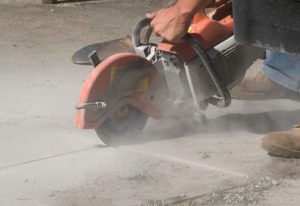 Preparation of Concrete Floors for Patch Repairs
Preparation of Concrete Floors for Patch Repairs
Repair edges should be defined by saw cutting to at least the minimum applied depth of the repair medium, followed by removal of sufficient concrete to maintain the minimum mortar thickness throughout the repair. When repairs extend to bay edges, particularly at expansion joints, the depth of the repair should be increased at the bay edge. Concrete removal is typically carried out using concrete breakers; care should be taken to avoid fractures in the remaining concrete and breakers with sufficient power for concrete removal with the lowest risk of producing fractures in the background should be chosen. The operative should ensure that concrete surfaces are correctly textured by using a scabbler or needle gun. Peaks of concrete close to the finished repair surface should be removed to avoid the risk of reflective cracking. All loose, friable or contaminated materials must be removed before the repair process commences.
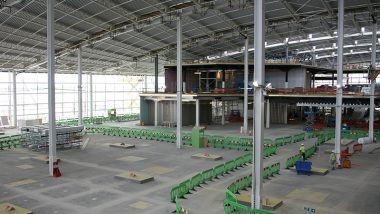
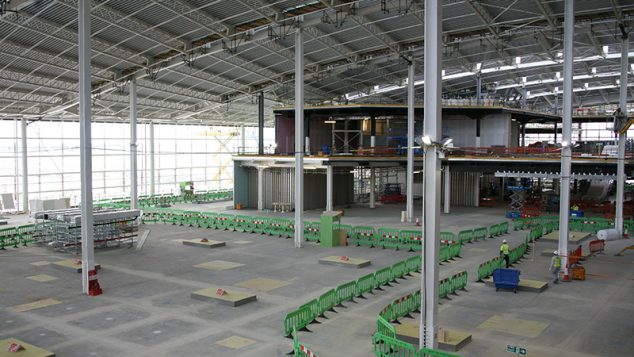
RonaScreed FastDry Prompt – benefits and drying
RonaScreed FastDry Prompt (formerly RonaScreed 8 Day Overlay) is so-called because it is a fast-drying screed additive which enables a 50mm thickness of 3:1 sand/ cement screed to be overlaid with moi ...
Read more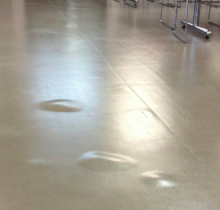
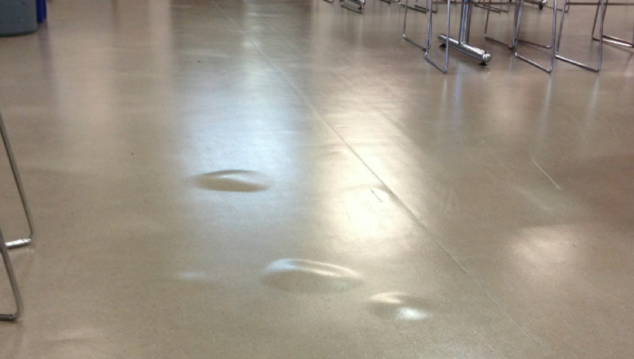
BS 8204-1 “Concrete bases and cementitious levelling screeds to receive floorings — Code of practice” section 6.11.1 suggests the following calculation for drying of screeds with no fast drying additi ...
Read more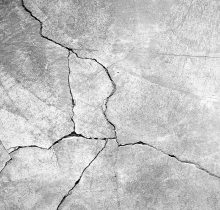
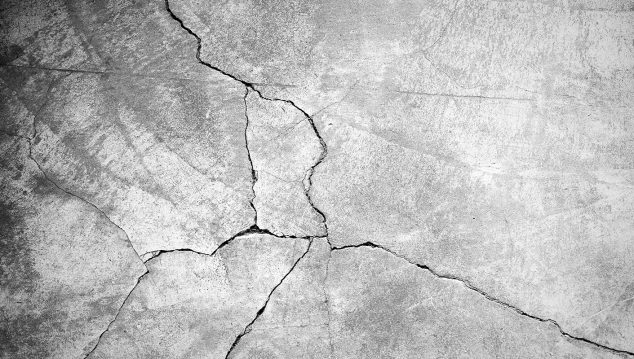
Avoidance/ Mitigation Of The Effects Of Common Forms Of Cracking In Cementitious Screeds
Aggregate is usually 0–4 mm and is mixed with cement in the ratio of 1:3 or 1:4 cement to sand, depending on strength requirements and drying requirements. For total screed thicknesses in excess of 50 ...
Read more